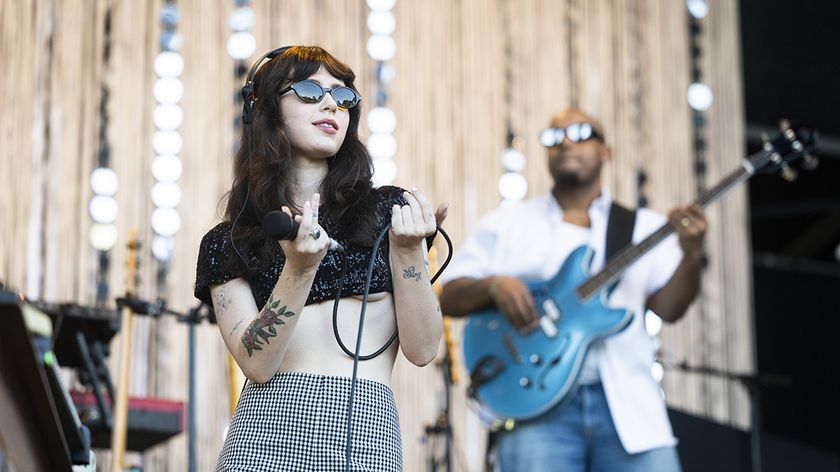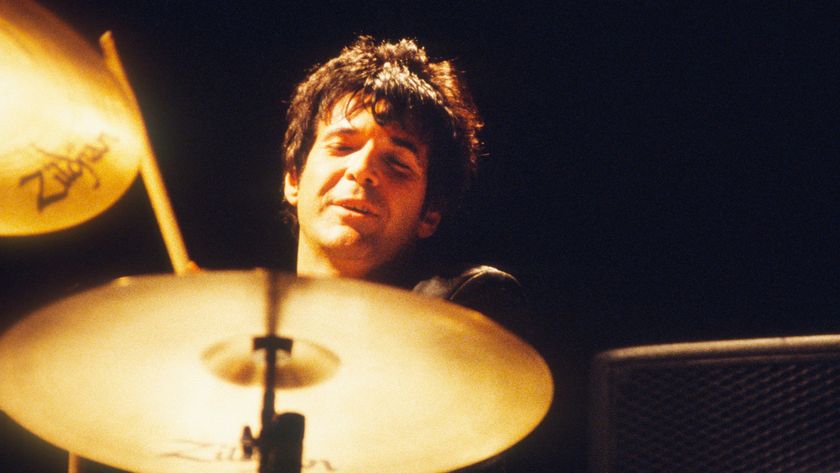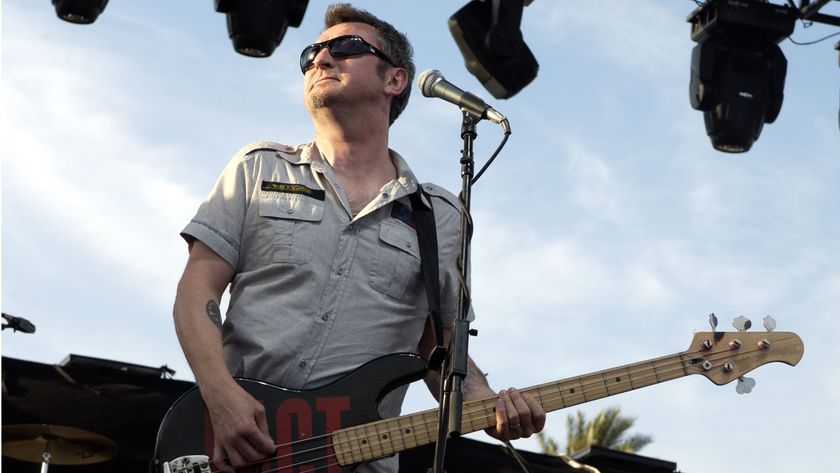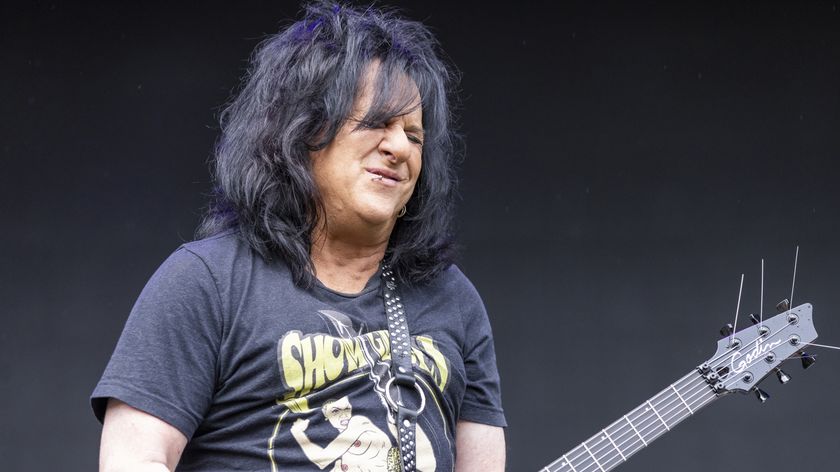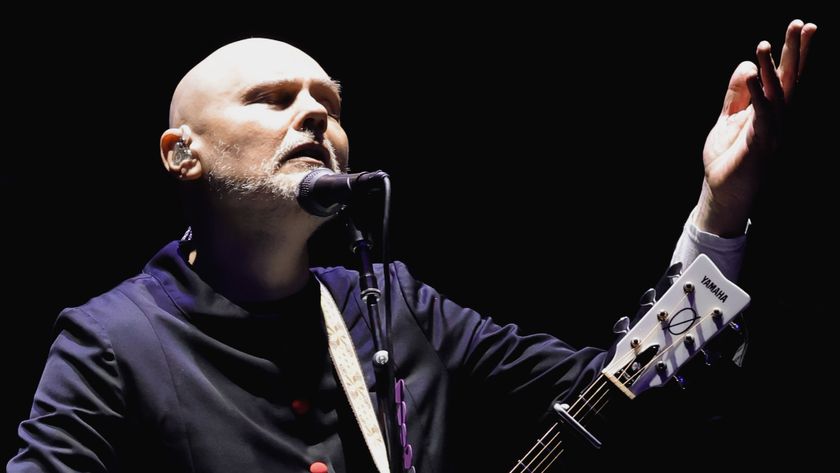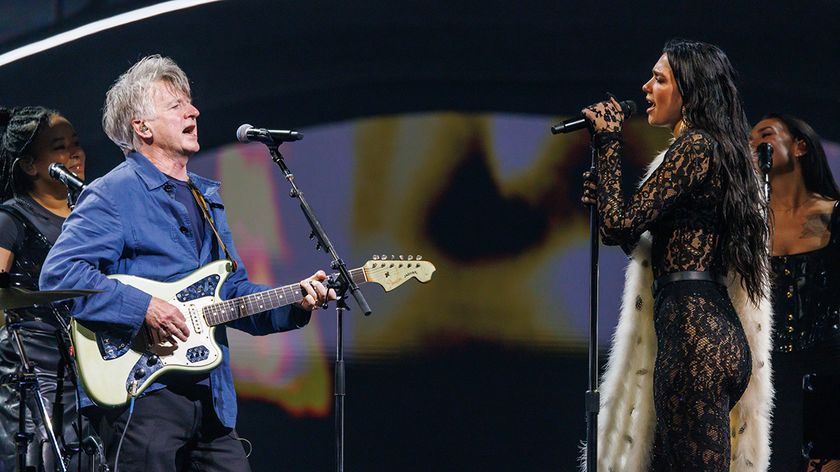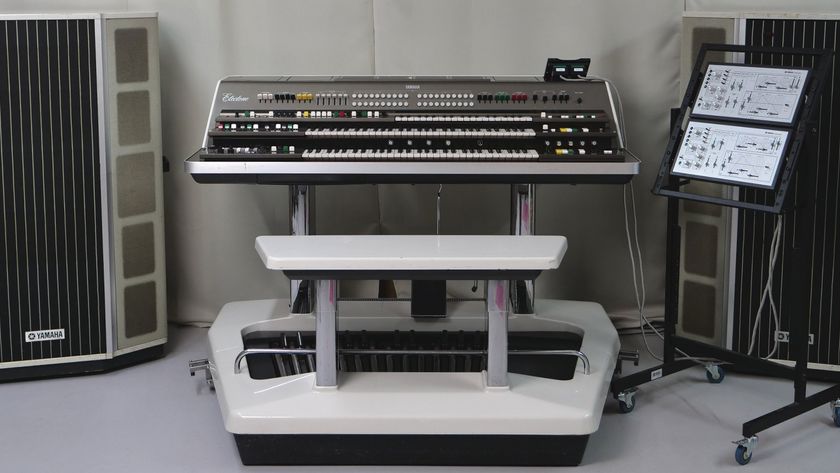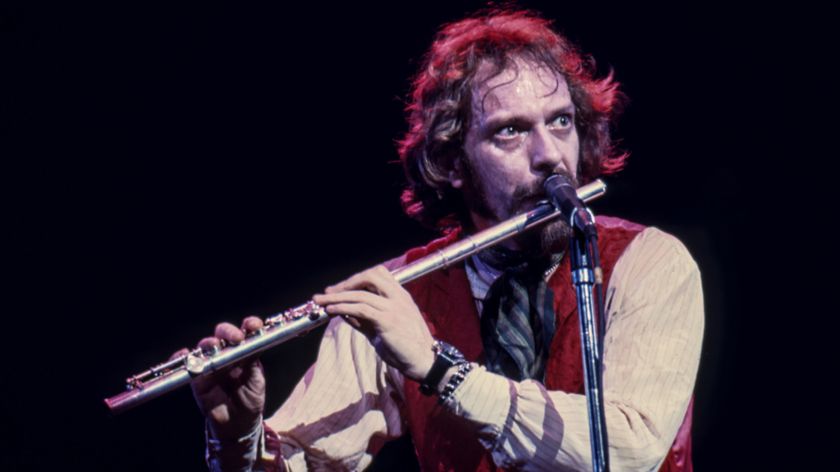Classic album: Darude on Before The Storm
Featuring one of the biggest trance hits of all time, Ville Virtanen’s debut long-player remains an inspiration to aspiring producers everywhere

You can make it! Look at Darude. He’s the man behind Sandstorm - trance anthem, internet meme, and the biggest selling vinyl single of 2000. He’s got three Finnish Grammys in his trophy cabinet, and a debut album that clocked up 800,000 sales.
Before all that, though, he was just little old Ville Virtanen - a wannabe producer with a glint in his eye and a CD-R tucked under his arm.
Luckily that CD-R (featuring an early version of Sandstorm) found its way into the hands of national dance music icon Jaakko Salovaara, aka JS16, in August of 1999.
On hearing the youngster’s ludicrously infectious blend of euphoric trance riffs and pulsating beats, he called the number scrawled on the front and immediately signed him to his new label, 16 Inch Records. From there, he swiftly took him under his wing, mentoring him in the studio, developing his ideas, and nurturing his talents.
“I was so wet behind the ears, but Jaakko showed me the ropes,” says Darude. “And within two days we had Sandstorm and a few other tracks finished and bounced down to DAT.”
On release, Sandstorm surged up charts across the globe, causing a clamour for new material. Luckily the pair had bunkered down in Jaakko’s studio, and had the bulk of what would become the full-length album Before The Storm in rude shape.
“Our purpose was to make great dance music,” Darude remembers. “But we had to follow the success of Sandstorm. The process did feel quite rushed but we took it one track at a time.”
Get the MusicRadar Newsletter
Want all the hottest music and gear news, reviews, deals, features and more, direct to your inbox? Sign up here.
The resulting album succeeded in quashing the public’s thirst for more Sandstorm-esque tracks, while exploring hjard house, electro, breakbeat and trance.
“It’s an important album for me. It has the first track I was ever signed with on, and it was also the first full project that I ever did.
“Credit where credit is due, though. Jaakko Salovaara was the one who, so to say, ‘found me’. Within a week or two, I went from being a part-time worker and a student to a professional musician.”
Darude there: proving there’s hope for us all. Here, he takes us through Before The Storm, track by track.
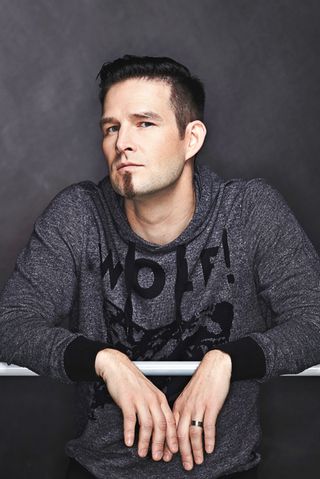
Sandstorm
“Why name it Sandstorm? It’s quite a boring story. We had a blank piece of paper and started filling it with names we thought were cool. Then we looked at the Roland JP-8080 and the sound that we used as a pad was called ‘Sandstorm’.
“The first version I made of this originally had a different name. I’ll never play anyone that version [laughs]. It had a vocal that I’d done myself. It was called Back In The Time, or something like that. I was humming or chanting on top of it.
“It’s hard to know the total sales this song had. The first year, I think Sandstorm sold about two million copies. I think it was the most sold vinyl of 2000. Then it went on to sell four million, or more, after we reissued it in 2006.”
Burning
“Burning, composition-wise, is more Jaakko’s doing than mine. All the sessions were done together, but he’s the mastermind with the chords, definitely, on this one.
“The vocal is by a guy called Rummy Nanji. I met him in Finland, but he’d been in the music business for a while. Jaakko and me had this melodic idea and needed a vocal, so we had him come over and work on it. I’m not sure where the lyrics came from, but they just came out of him. We recorded a couple of takes of him and it just added really nicely to the instrumental of the track.
“Burning uses a lot of the same basic drum loops from elsewhere on the album, and the same arpeggiated basslines and stuff. The kick in the tune is from the 909, which was a real one, and an interesting thing to work with because I’d only seen those as software plugins.”
Feel The Beat
“I went to Jaakko’s studio and he was playing with this arpeggiated sound, but couldn’t get any further and was going to trash it. I asked if I could take it, and began working on the samples in the same way and bpm that I had been working on with Sandstorm, and it just came together.
“As we were making this, Sandstorm wasn’t a big international success, but it felt natural to continue that vibe across; but when it was released I received criticism from people who said, ‘You’ve just tried to make a copycat record’. I understand where that comes from, but it wasn’t like that because we had no idea that Sandstorm would have such success when we were making Feel The Beat. We just had the same tools in the studio and the same vibe going on.”
Out of Control
“Time went by a little bit before we started making Out Of Control, so there was a conscious decision to not use the same kind of underlying drum loops as the earlier stuff.
“I wanted a percussion vibe on it - the groove here relies on that. We wanted to change up the normal straight-up hi-hat pattern too. I think it’s about 137bpm, as well, which added a new flavour.
“The first version was an instrumental, but then we added Tammy Marie and called it Out Of Control (Back For More). That was a good move, commercially. We were worried it might be too cheesy, but I think it hit a really good market. I get asked for this track a lot when I DJ.”
Time went by a little bit before we started making Out Of Control, so there was a conscious decision to not use the same kind of underlying drum loops as the earlier stuff.
Touch Me Feel Me
“Besides the chords, overall slow vibe of the track, and the arpeggiated melody of the piano that comes in later, what I really like about this track is the actual vocal bit - it’s really cool.
“We used the Ensoniq ASR-10 sampler, and added a female vocal sample that goes, ‘Touch me, feel me’ really quickly. When you put it in the sampler and create a tiny loop, then lock the loop length and assign it to a mod wheel, then scan through the vocal, it lets you advance slowly like a DJ CD player.
“I’d never seen that ever before. I was so excited when Jaakko showed me that. The Ensoniq ASR-10 sampler was the only way to do that back then.”
Calm Before The Storm
“This was a track I made in my kitchenette studio in my apartment one day in 1999, before I made Sandstorm. I started it around noon and ended up bouncing the final version down around 11pm or midnight, and took it to a club where my DJ buddy played it there.
“For the album, we redid it like we did Sandstorm. Jaakko took the main guitar part, the main melody, and developed it further so it became more sophisticated with the chords than mine.
“One thing I’m really regretting right now is that back then we’d made a really cool chillout version of the track and all I have left is one crappy quality bounce of it and the project file doesn’t exist any more.”
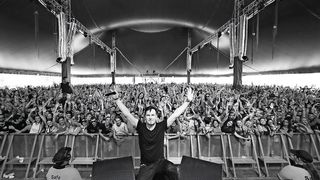
Let The Music Take Control
“This was my track initially, as well, but it was just half a track, with Acidic 303 sounds that I made in ReBirth, the Propellerhead software. Then, in Jaakko’s studio, we redid the 303 parts with a JP-8080 - it had a rather nice 303-sounding patch. Then we sampled my 303s from the first version.
“I really liked the breakbeat part, as I’d loved that style of Jaakko’s music and was so happy that I was able to get some of that in one of my tracks.
“There's also a ‘woo-woo’ train horn sound in there that comes from the JV-1080. It was a preset sound that was kind of like a joke, but it’s there to make people smile.”
Drums Of New York
“Jaakko was a already a great DJ back then, and was always following trends and sounds from places like New York. Although this is quite fast, driving and progressive, some of the tribally stuff that we used triggered the name of the track, Drums Of New York.
“What’s interesting about the track right now is that the original is 142bpm, and now that I’m revisiting them to play in some of my sets, I’m having to edit the speed down.
“It’s hard for me to play them as they are, as they're so fast and a different style to what I play these days. I found that taking Drums Of New York down one semitone brings it to about 134bpm, and that’s almost playable to me.”
The Flow
“My friend Toni Lähde, aka Luzid, is on the rap here. We had a crew called Mindmachine and this is one of the tracks we did together. Originally it was 134bpm and lighter sounding.
“The drums on this and Drums Of New York are like a sister and a brother - the bass is the same. They are like split personalities of the same track. Drums Of New York is the hard banger, then The Flow is a more melodic take on that with the bassline. It’s interesting now that when you listen to it, one track ends and the other track starts, and similar stuff comes back in. I kinda like how we did that. I’m not sure if there was a big thought process behind it, but it works.”
Sandstorm (JS16 Remix)
“Jaakko’s JS16 Remix is quite different. It’s more laid-back. It’s not as relentless. I’m not sure if he realised it at the time, but if you listen back to it, it’s in the same key of E Minor still, but he gives it different chords, and it ends up very close to Robert Miles’ Children’s chord progression. It doesn’t have anything else the same, but the chords are quite similar. I’m not sure if it was conscious. Jaakko isn’t someone who’d copy anything like that on purpose. If you timestretch Children you could probably fit those two on top of each other.
“Jaakko’s remix is also different as he was way more conservative with the main lead of Sandstorm as well. He wanted to make a distinction between his mix and mine.”
Jaakko’s remix is also different as he was way more conservative with the main lead of Sandstorm as well. He wanted to make a distinction between his mix and mine.
Feel The Beat (JS16 Dark Mix)
“The Dark Mix is probably the mix that I have played the most in my sets over the years. Right at the start I needed to play the original mix, but as things started to settle as I started to DJ more, I turned to this. Before that, I was doing more live sets. I started playing an edit of the Dark Mix because it was more banging.
“I loved the bassline that he’d created for it, too. It was typical Jaakko for me at that point. We had this so-called single version, and he just wanted to be like, ‘Screw everything. I wanna do what I wanna do’, and on purpose did a darker and more banging version.
“It’s interesting to talk about the first album, because I was so wet behind the ears, so there are not many things on the album that have a message, or thought-out direction. Everything just kind of happened as we were working on it.”
Catch Darude on his Twitch channel for production masterclasses and software reviews.


Future Music is the number one magazine for today's producers. Packed with technique and technology we'll help you make great new music. All-access artist interviews, in-depth gear reviews, essential production tutorials and much more. Every marvellous monthly edition features reliable reviews of the latest and greatest hardware and software technology and techniques, unparalleled advice, in-depth interviews, sensational free samples and so much more to improve the experience and outcome of your music-making.

"Reggae is more freeform than the blues. But more important, reggae is for everyone": Bob Marley and the Wailers' Catch a Fire, track-by-track
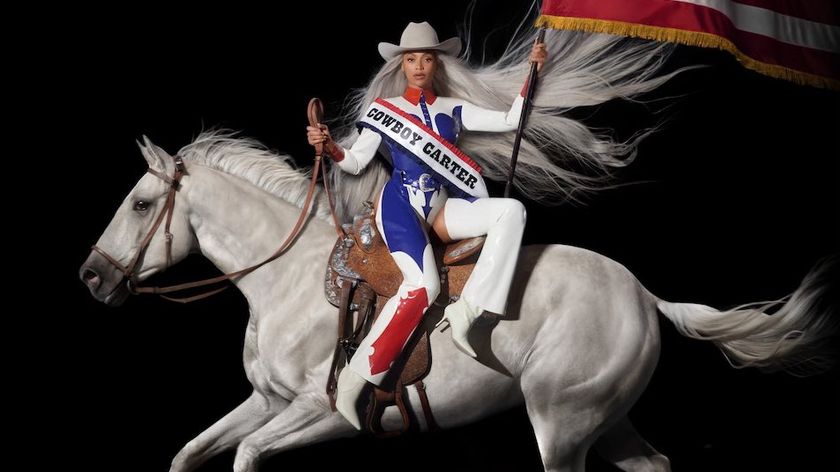
“Part of a beautiful American tradition”: A music theory expert explains the country roots of Beyoncé’s Texas Hold ‘Em, and why it also owes a debt to the blues

